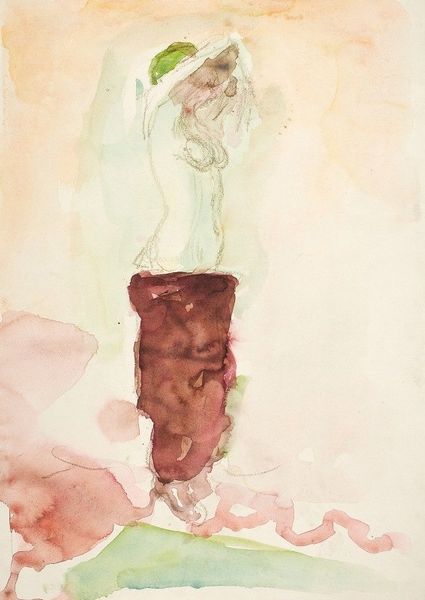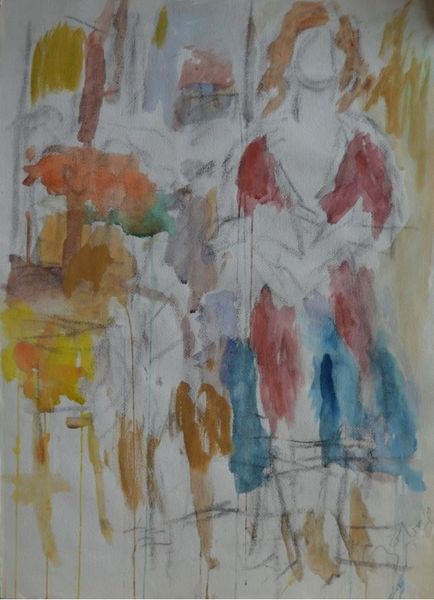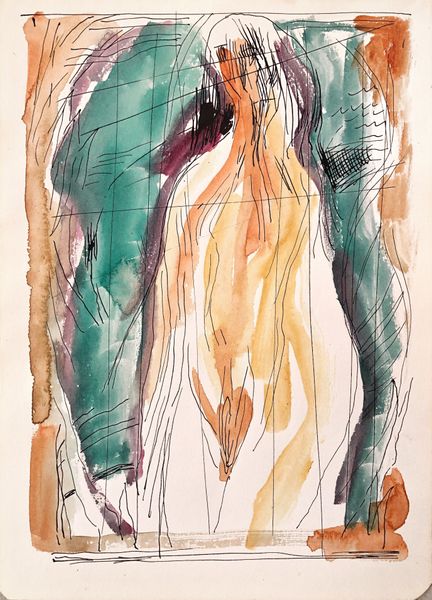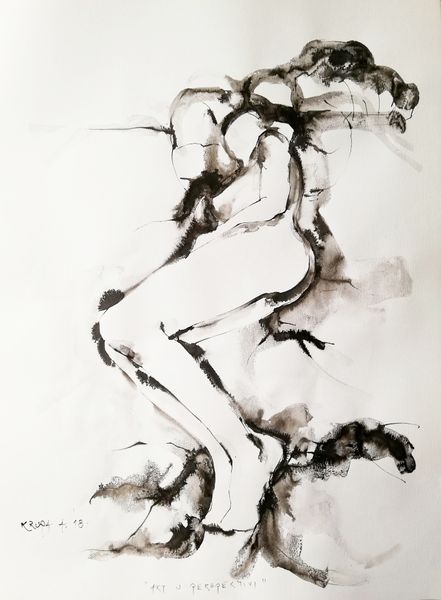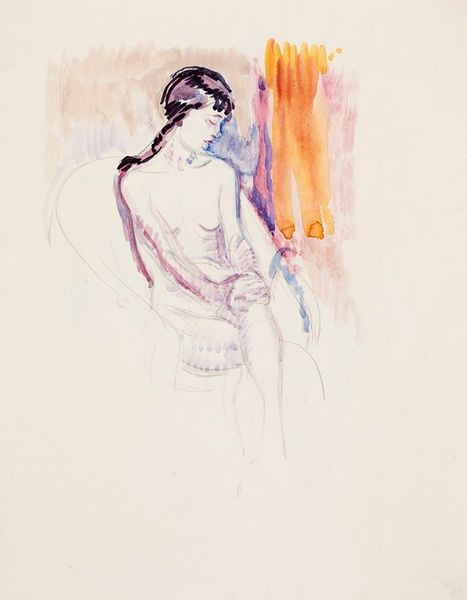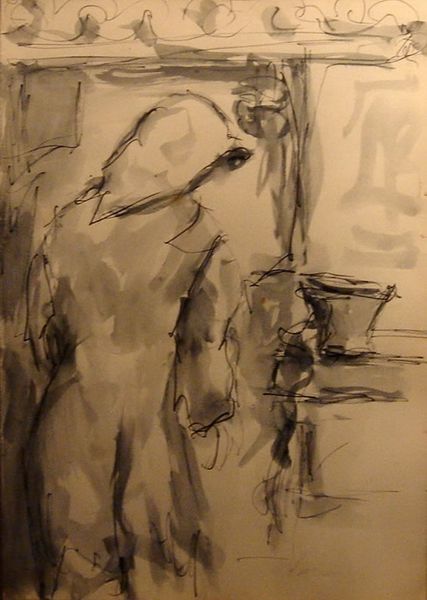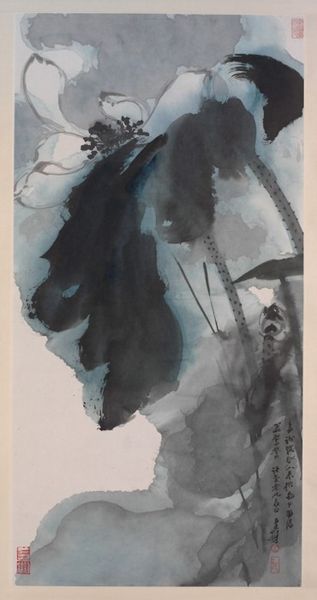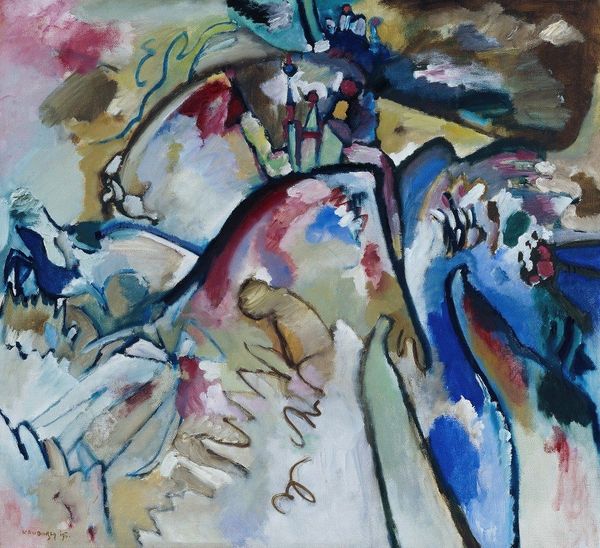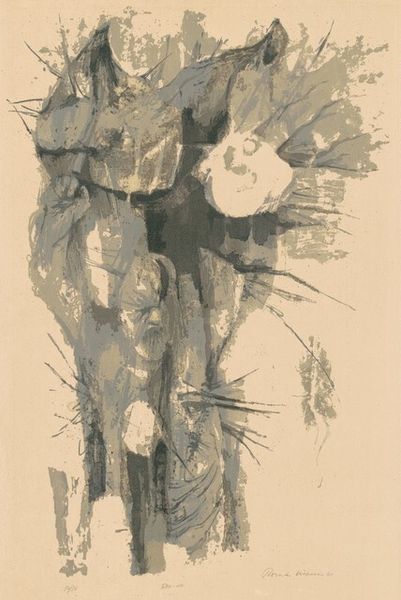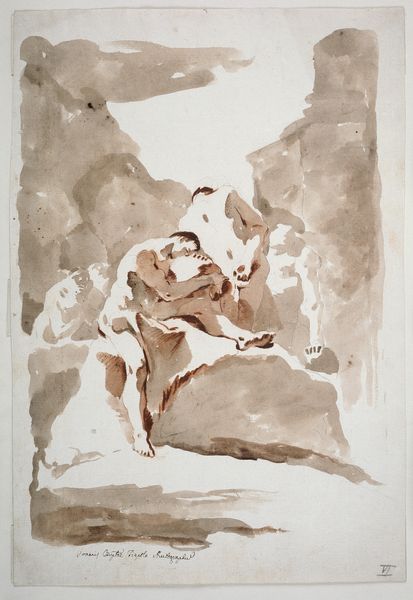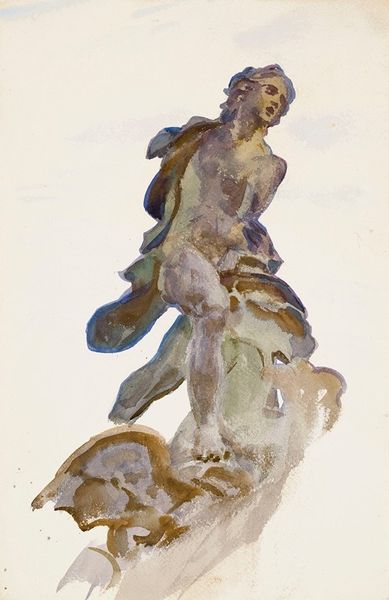
drawing, watercolor
#
drawing
#
figuration
#
oil painting
#
watercolor
#
expressionism
#
watercolour bleed
#
watercolour illustration
#
nude
Copyright: Public Domain: Artvee
Curator: Edvard Munch created this watercolor, titled "The Artist and His Sick Eye. Kneeling Female Nude with Eagle," in 1930. What are your initial thoughts? Editor: The bleeding watercolour gives the entire piece a sense of dissolution and pain. The lack of clear, definitive lines makes it hard to distinguish one figure from the next. It feels fragmented. Curator: Indeed. The composition is strikingly disjointed, isn't it? Observe how the female figure is rendered with such fluidity, almost dissolving into the blue wash behind her, while the eagle is somewhat more defined but still feels spectral, looming large on the left. The vertical format only seems to heighten that effect of being in thrall to a single compositional idea. Editor: Exactly. The kneeling nude, paired with the symbolic weight of the eagle, seems to me like an allusion to ancient mythologies where women and avian creatures bear significance. Could Munch be hinting at a personal allegory? What would be the eagle’s function here in respect of Munch’s personal story? Curator: An interesting point, and a classic psychoanalytic reading, of course. Although his sickness affected Munch and gave a certain melancholia in his rendering of form, his mastery over line is obvious. In fact, there's a visual echo between the woman’s pose and the implied predatory pose of the eagle that is achieved very deliberately using strong brushstrokes, as well as light and shade. I would propose that in those echoes is found a powerful resonance across the picture’s internal forms. Editor: True. Although it's hard to miss, even within the turbulent washes of colour, that each line contributes toward shaping its adjacent form. Despite the image’s somewhat distressed appearance, the composition has great clarity and visual intention. Curator: Indeed. By orchestrating line, color and texture in an aesthetic whole that offers so many different possibilities for exploration, it transcends what is, on first impression, simply an Expressionistic artwork, to become a truly impressive painting with both intellectual weight and art-historical interest. Editor: I concur. It's fascinating how the artwork simultaneously feels like a deeply personal confession, steeped in symbols that demand decoding, and an exquisitely crafted example of the artist’s visual and structural intelligence.
Comments
No comments
Be the first to comment and join the conversation on the ultimate creative platform.

